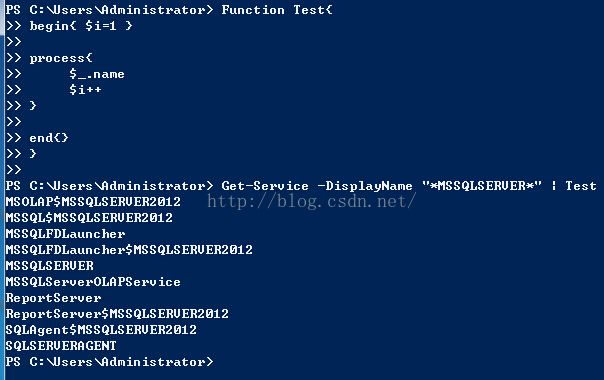PowerShell 函数(Function)
函数基本操作:
#创建函数
Function GetSQLService
{
Get-Service -DisplayName "*SQL*"
}
#调用函数,直接写函数名
GetSQLService
#查看函数定义
$Function:GetSQLService
#导出函数定义到文本
$Function:GetSQLService | Out-File E:\GetSQLService.ps1
#删除函数
del Function:GetSQLService
#查看内部自定义函数:
dir function: | ft -AutoSize
创建带参数的函数,三种方法(会覆盖同名函数):
#创建带参数的函数,三种方法(会覆盖同名函数)
Function GetSQLService($ServiceName)
{
Get-Service -DisplayName "*$ServiceName*"
}
Function GetSQLService
{
param($ServiceName)
Get-Service -DisplayName "*$ServiceName*"
}
#有默认值的参数
Function GetSQLService
{
param($ServiceName='SQL')
Get-Service -DisplayName "*$ServiceName*"
}
#多个参数
Function GetSQLService
{
param($ServiceName,$KeyWord)
Get-Service -DisplayName "*$ServiceName*$KeyWord*" | Format-Table -AutoSize
}
调用函数:
GetSQLService
GetSQLService SQL
GetSQLService -ServiceName SQL
GetSQLService -KeyWord MSSQLSERVER
GetSQLService -ServiceName SQL -KeyWord MSSQLSERVER
万能参数,无需声明参数,直接使用内部参数:
Function GetSQLService
{
Get-Service -DisplayName "*$args*"
}
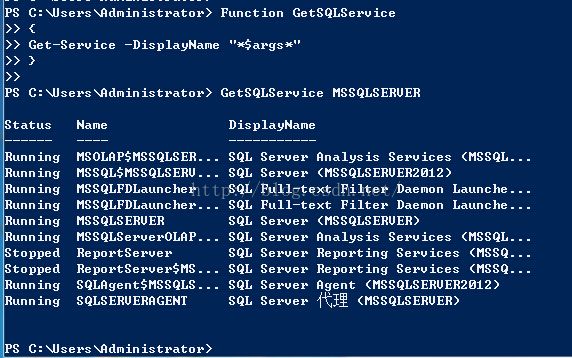
#这里用其他参数名,调用时函数将无法识别参数,不可这样使用。只能用$args
Function GetSQLService
{
Get-Service -DisplayName "*$ServiceName*"
}
求和函数示例:
#求和函数,调用函数时参数 $args 可以同时输入多个值。
Function Add
{
$sum=0
$args | foreach {$sum=$sum+$_}
$sum
}
Add 1 2 3 4 5 6 7 8 9 10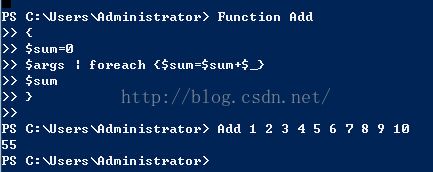
返回多值的函数,也可使用 return 返回,使用 return 后函数将结束返回,后面语句不会执行
Function Test { "Zero", "One", "Two", "Three" }
Function Test
{
"Zero"
"One"
"Two"
"Three"
}
Function Test { "Zero" "One" "Two" "Three" } #这样写错误!
Function Test
{
"Zero"
"One"
return "Two"
"Three"
}
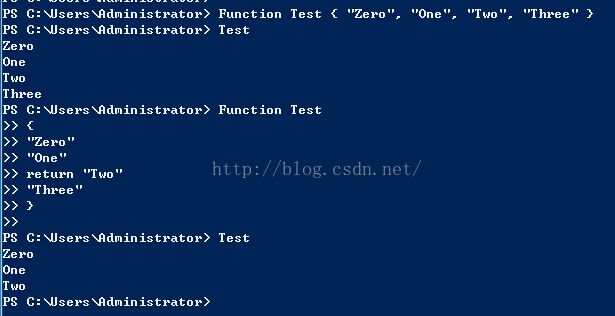
输出注释,不会作为结果:
Function Test
{
Write-Host "此处为注释不作为结果,但同样会输出"
"Zero"
"One"
return "Two"
"Three"
}
Test
$Test = Test

隐藏函数内部的错误:
#函数内部有错误,调用时也返回错误!
Function Test { Stop-Process -Name "kk123456" }
#使用参数 $ErrorActionPreference 可隐藏错误
Function Test
{
$ErrorActionPreference="SilentlyContinue"
Stop-Process -Name "kk123456"
$ErrorActionPreference="Continue"
}
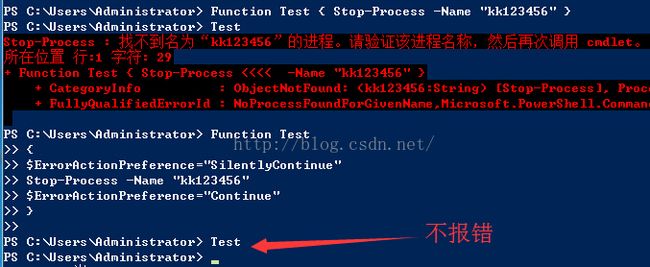
管道应用:函数内部处理上一个的结果集:
Function Test { $input }
2,0,1,2 | Test
Function Test
{
Foreach ($element in $input)
{
"value: "+$element
}
}
2,0,1,2 | Test
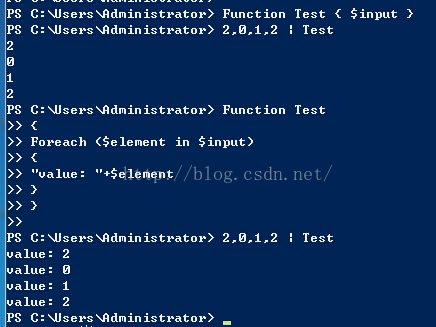
使用过滤器 Filter(特殊函数)的流模式处理管道数据,避免结果集太大占用过多内存或进程等待太久
Filter Test
{
Foreach ($element in $input)
{
"value: "+$element
}
}
2,0,1,2 | Test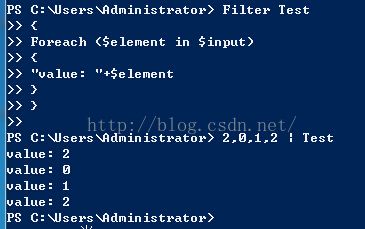
使用Filter时, $input 每次传递一个元素,不再是整个结果集,因此不必要了,用变量 $_ 替代
Filter Test{ $_.name }
Get-Service -DisplayName "*MSSQLSERVER*" | Test
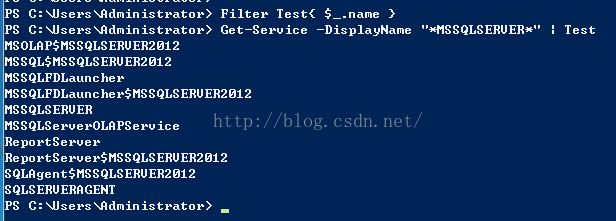
函数在内部 process 也可以处理多结果集:
Function Test{
begin{ $i=1 }
process{
$_.name
$i++
}
end{}
}
Get-Service -DisplayName "*MSSQLSERVER*" | Test